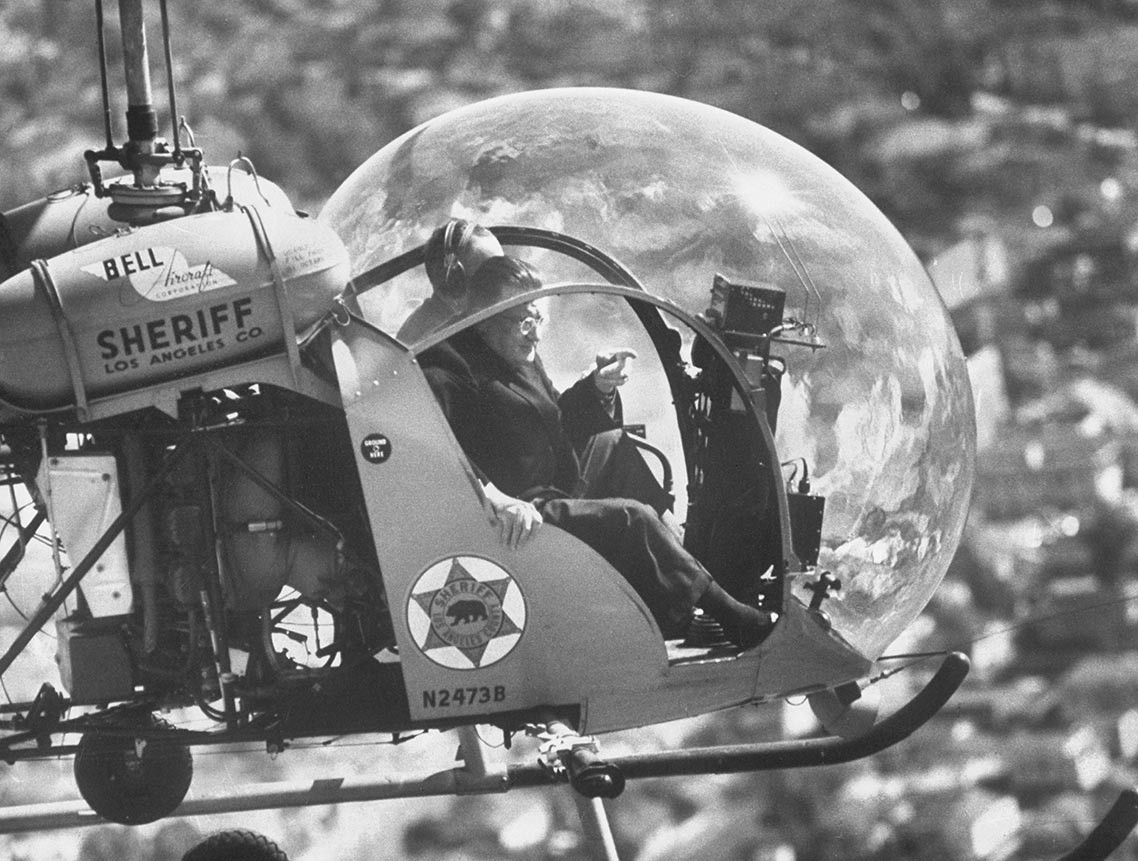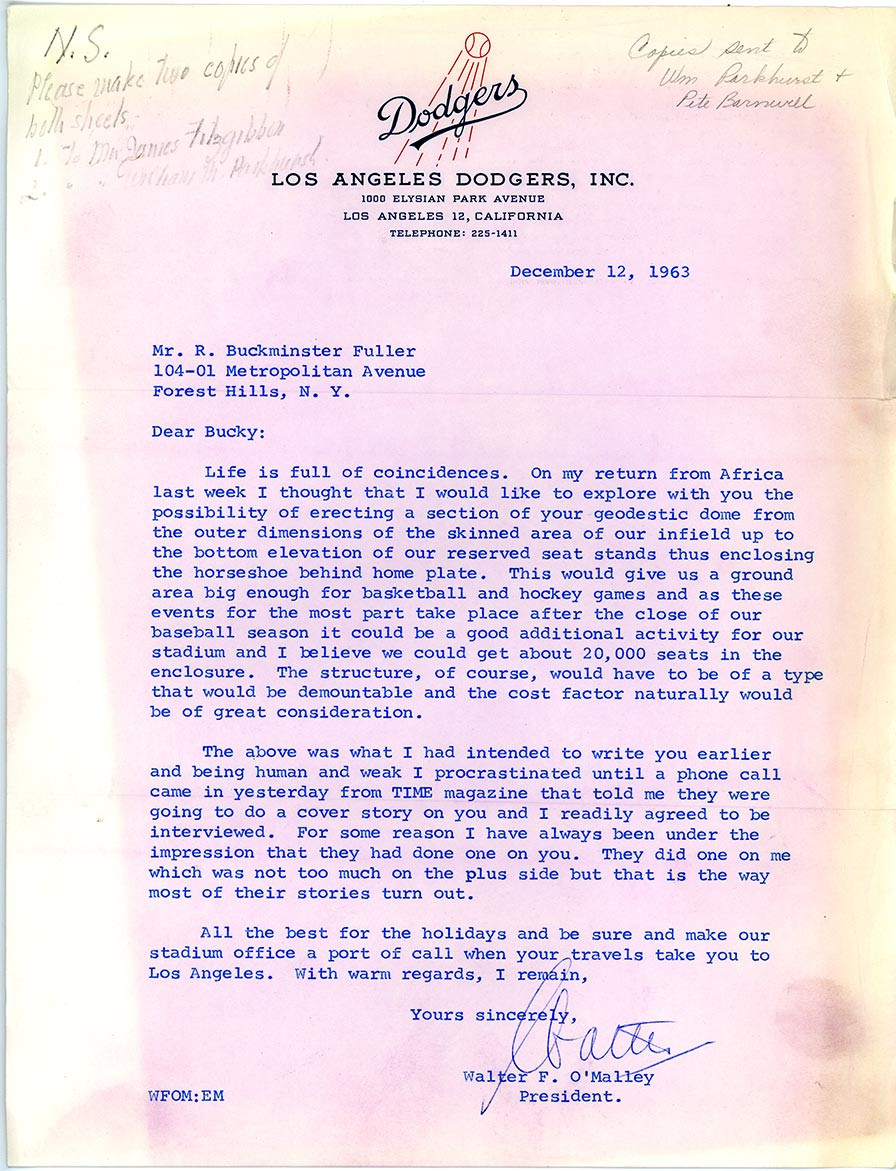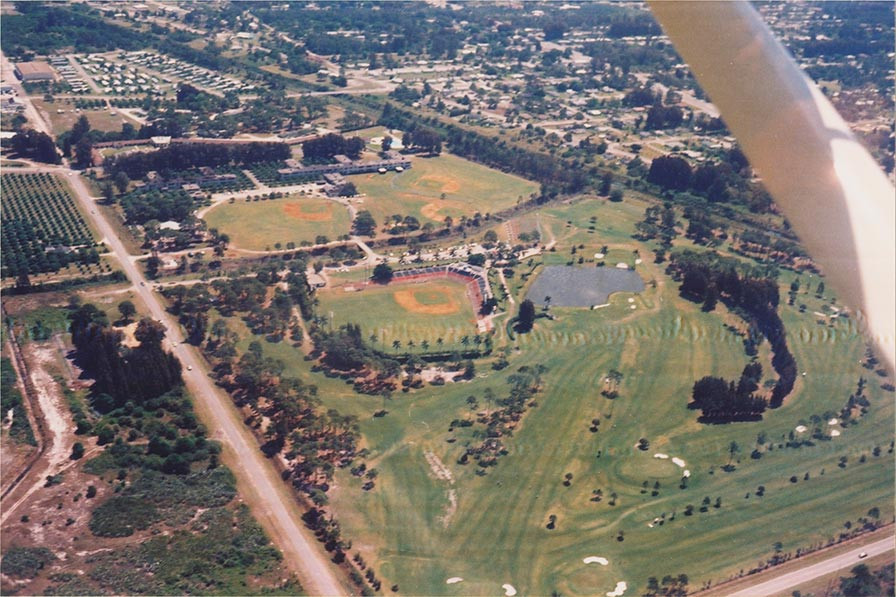This Day in Walter O’Malley History:
-
Kay and Walter O’Malley’s son Peter is born in Brooklyn, New York.
-
The Sporting News reports on an explanation by Walter O’Malley how the New York Giants won the 1951 National League Pennant after the Dodgers had a 13 1/2-game lead in August. “It wasn’t easy,” said O’Malley, “but we did it.” The Sporting News, December 12, 1951
-
Walter O’Malley announces that in a change from past practices of multiple season and mini-package ticket plans at Ebbets Field, just two season ticket plans will be available for the 1953 season. The only two alternatives are a 50-game plan and a 77-game full-season plan. “This year we expect a lot of criticism over our plans,” said O’Malley. “But we are going to assure everybody who buys the plans that they will hold the same seats, if we make the (World) series. Hitherto in Ebbets Field, we have had three, four, five claimants for the same seat, off our various plans, when the series came around. We had to bump out practically all claimants to accommodate the brass of other ball clubs. Now we are going to take care of these 50 and 77-game buyers in the series, even if we have to send the brass of other clubs into left field.” New York World-Telegram and Sun, December 12, 1952
-
Los Angeles Mirror News sports columnist Sid Ziff writes about Walter O’Malley’s wild 50-minute ride over Los Angeles in a L.A. County Sheriff’s helicopter on May 2, 1957. “I swear,” recalled O’Malley, “that I was sitting part in the machine and part out of it. I remember thinking, ‘I hope the seat belt holds.’” Ziff writes, “To make matters worse the pilot was very conscientious and as they hovered over Chavez Ravine he would tilt the copter from one side to the other to give O’Malley a complete view of the topography. ‘I was never so scared in my life,’ O’Malley concluded with a shudder.” Sid Ziff, Los Angeles Mirror News, December 12, 1957
-
Walter O’Malley sends a letter to inventor and designer R. Buckminster Fuller about the possibility of covering a section of Dodger Stadium for year-round use. The two had regularly corresponded since Fuller had been involved in ideas for a possible dome stadium (the first of its kind for baseball) in Brooklyn at the intersection of Flatbush and Atlantic Avenues in the mid-1950s. “On my return from Africa last week I thought that I would like to explore with you the possibility of erecting a section of your geodestic (sp.) dome from the outer dimensions of the skinned area of our infield up to the bottom elevation of our reserved seat stands thus enclosing the horseshoe behind home plate. This would give us a ground area big enough for basketball and hockey games and as these events for the most part take place after the close of our baseball season it could be a good additional activity for our stadium and I believe we could get about 20,000 seats in the enclosure. The structure, of course, would have to be of a type that would be demountable and the cost factor naturally would be of great consideration...All the best for the holidays and be sure and make our stadium office a port of call when your travels take you to Los Angeles.”
-
Barry Mirkin of Hillcrest Country Club of Los Angeles writes to Walter O’Malley regarding the successful Sandy Koufax Testimonial Dinner held there on December 4, benefiting the Boy Scouts of America. “May I both personally and on behalf of Hillcrest’s Board of Directors express our grateful thanks and sincere appreciation for your participation at the Sandy Koufax dinner. There have been many note-worthy events staged at Hillcrest, but we are sure that this affair will rank with the greatest among them. Walter, added to this you have the satisfaction of knowing that boys all over America will share the benefits that were made possible by your unselfish and gracious efforts.”
-
Walter O’Malley writes a letter to Carl Streuver, General Manager of Peru, Illinois-based American Nickeloid Company about the reason for starting a nine-hole golf course on the grounds of Dodgertown in Vero Beach, Florida. “First of all, it has little or no profit potential,” writes O’Malley. “In the spring our black players were not invited to the private Riomar and Vero Beach Country Club courses, but stars such as (Don) Drysdale, (Sandy) Koufax and others were. Rather than face an incident on this I decided to build nine holes which proved extremely popular with the players and, incidentally, myself. We have operated this course for three years at ridiculously low greens fees with the course being public in nature in that no one was barred from play, it not being a private course. Play has been increasingly heavy so we are going ahead with an additional 18 holes and will generally operate it on the same basis. This course has taken some pressure off the two private clubs and perhaps has helped to avoid ‘incidents’.”
-
After returning to Los Angeles following a baseball convention in Florida, Walter O’Malley heard a lot of discussion regarding AstroTurf to be placed in Cincinnati’s stadium and the potential playing problems that might arise from the artificial surface. O’Malley decided to write to Roy L. Brandenberger of AstroTurf manufacturer Monsanto Company in Santa Clara, California. “I took the position that experiments were always worthwhile and the vote finally was in favor of the idea. From the standpoint of players, managers and coaches I think it might be a good idea to have a sample installation running the length from first to second base at a location in Florida where various teams could satisfy themselves as to what they might expect in actual play. At Dodgertown, Vero Beach, we have what is probably the most elaborate spring training base. One of our fields is called the ‘half field’. This is an infield without an outfield and is used to practice bunting, breaks, leads, stealing, hit and run, pitcher covering first, etc. This would be a good location for the experiment I have in mind. The general managers, at their meeting, would not recommend the expense of such an installation but it could be an item that your company could absorb out of its development system. At spring training we will have 200 ball players in the camp plus the fact that Florida based spring training clubs come to Dodgertown to play exhibition games, schedule attached. Visiting clubs have ample pre-game time to use our facilities and I am sure that such an Astro-turf installation would be used...A number of managers and coaches are aware of the problems, as one of the minor league parks where your competitor’s product was used the problems of oversliding, erratic ball bounces, etc. have been freely discussed. It might be well to put some of the fears to rest by giving your product a good preseason tryout...If there is anything to this idea let me know. On the other hand, if it does not seem practical from your company’s standpoint, forget it.”




